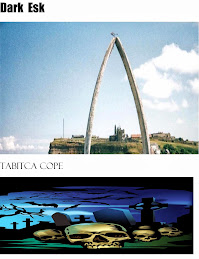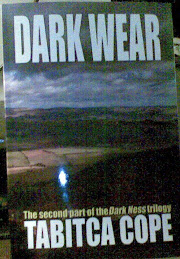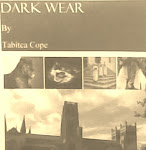Thursday 31 January 2013
breakthrough to Lake Whillans
Drill reaches
Antarctica's under-ice Lake Whillans
By Jonathan Amos
An American attempt to bore down into Lake Whillans, a
body of water buried almost 1km under the Antarctic ice, has achieved its aim. Scientists
reported on Sunday that sensors on their drill system had noted a change in
pressure, indicating contact had been made with the lake.A camera was then sent
down to verify the breakthrough. The Whillans project is one of a number of
such ventures trying to investigate Antarctica's buried lakes.
Read rest here :http://www.bbc.co.uk/news/science-environment-21231380
So exciting .I
wonder what they will find.
Tuesday 29 January 2013
Loren Coleman Blog
Loren Coleman has now stopped writing for Cryptomundo and is concentrating on his own blog here:
http://www.cryptozoonews.com/
Good luck with it Loren. I am sure there will be lots of interesting stuff coming up.
Cryptomundo will still be online as usual I presume.http://www.cryptomundo.com/
Lots of choice for everyone to read can only be a good thing.
http://www.cryptozoonews.com/
Good luck with it Loren. I am sure there will be lots of interesting stuff coming up.
Cryptomundo will still be online as usual I presume.http://www.cryptomundo.com/
Lots of choice for everyone to read can only be a good thing.
bigfoot sightings in UK and Alaska
PICTURED: Do these
footprints belong to the Tunbridge Wells Bigfoot?
The unusually large prints were discovered just outside of High Woods,
between Tunbridge Wells and Pembury, at the weekend.Sent in to us by a reader,
who wishes to remain anonymous, it was speculated they could have come from the
eight-foot tall Kentish Apeman.
Another Alaska
Bigfoot sighting?
Looks like the legendary "Alaska Bushman" is at it again.
According to the Delta Discovery, a family out egg hunting in the spring
of 2012 have come forward to say that they may have seen the elusive Bigfoot
during the trip.The family, unnamed in the story and from the small village of
Kasigluk, described the creature as large, dark and hairy, and its arms hung to
below its knees. At first, they said, they thought it was another person
returning from egg hunting. Friday 25 January 2013
In the news bigfoot sighting, komodo dragon attacks and naming all species before extinction
Legendary Bigfoot
sighted near Kasigluk
By K J Lincoln
Read the story here :http://www.deltadiscovery.com/story/2013/01/23/in-our-native-land/legendary-bigfoot-sighted-near-kasigluk/817.html
The Most Infamous Komodo Dragon Attacks of the Past 10
Years
Read more: http://blogs.smithsonianmag.com/science/2013/01/the-most-infamous-komodo-dragon-attacks-of-the-past-10-years/#ixzz2IyrqmMJG
World’s unknown species ‘can be named’ before they go extinct
By Melissa Hogenboom BBC News
Most of the world's plant and animal species could be named
before they go extinct, say researchers.Writing in the journal Science, the
researchers said it could be achieved this century.This is largely a result of
an increase in taxonomists - the people who describe species new to science.The
scientists acknowledge that although there is an extinction crisis, they say
the rates are lower than previously thought.Discovering and naming the world's
species is critical for their conservation and can be done with only a modest
increase in effort, the researchers stated.But they also recognised it will be
difficult to maintain a high rate of discovery as it becomes harder to find
rare species.Previous overestimates of the number of species - some as high as
100 million, led some in the scientific community to believe that it would be
impossible to name all the world's species before they go extinct.
Read rest here : http://www.bbc.co.uk/news/science-environment-21162197
Wonder if that
includes cryptids ?
Thursday 24 January 2013
Follow up on the British Bigfoot and giant Manta Rays.
Remember the reports
of the British bigfoot Sightings? See below if not
Bigfoot-like creature
spotted in Tunbridge Wells
Forget the Beast of Bodmin and say hello to the Kentish
Apeman.
By Richard Alleyne 22 Nov 2012
Residents of the upmarket Royal Tunbridge Wells claim they
have a giant ape-like beast running around the nearby countryside. The 8ft
creature, said to have "demonic" red eyes and long arms, was spotted
by a walker in the woods beside the town's common. The man told the Sun he ran
off after the beast roared at him. The “sighting” is one of several in the last
six months, and locals are split as to whether it is the "real thing"
or a prankster in fancy dress. According to community website Tunbridge Wells
People, the Kentish Apeman was first seen on the 200-acre common 70 years ago
during World War Two. Read more here: http://www.telegraph.co.uk/news/newstopics/howaboutthat/9695107/Bigfoot-like-creature-spotted-in-Tunbridge-Wells.html
Tunbridge Wells Bigfoot: Londoners come to town to search for mythical monster.
Read more here :http://www.tunbridgewellspeople.co.uk/Tunbridge-Wells-Bigfoot-Londoners-come-town/story-17938846-detail/story.html
For those who like giant fish enjoy this:
In Pictures: Monitoring the world's largest manta rays
http://www.bbc.co.uk/nature/21161721
Wednesday 23 January 2013
A recap on the Almasty
In view of the expeditions and interest lately in looking for the Russian bigfoot I thought I would recap some of the history of the sightings.
Almasty or Almas, is apparently Mongolian for 'wild man', and is presumed to be a hominid which lives in the Caucasus and Pamir Mountains of central Asia, and also the Altai Mountains of southern Mongolia
The
Almastys (Almasties?) are like humans in that they they have 2 arms and 2 legs , except that they are covered with hair.
"The hair is like that of
a bear, and dark. I always saw them without clothing . . . they do not
know how to speak; they only mumble or bellow. They are not afraid of
people, only of dogs. They run very fast." That is how 67-year-old
Koumykov Feitsa, from the village of Kurkujm, deep in the Caucasus
Mountains, described the Almastys he used to see as a youth in the
1930s.
Sightings have been recorded in writing as
far back as the 15th century. In 1430, Hans Schildtberger recorded his
personal observation of these creatures in the journal of his trip to
Mongolia as a prisoner of the Mongol Khan. There
is the story of Zana, said to have been a female Almasty who allegedly
lived in the isolated mountain village of T'khina, fifty miles from
Sukhumi in the Caucasus Mountains. Captured in the mountains in 1850,
she was at first aggressive towards her captors; but very soon became
domesticated and was supposedly even able to assist with simple
household chores.
Nikolai Przhevalsky was said to have observed the animals in Mongolia in 1871 .
A
reported encounter with a male Almasty in 1941, shortly after the
German invasion of what was then the USSR. According to the story, a
creature somewhat similar to Zana was found in the Caucasus Mountains
region by a detachment of the Red Army under the
control of a Lt. Col. Vargen Karapetyan. According to Karapetyan, the
beast was very human-like, but was covered in fine, dark hair.
Interrogation revealed the creature’s apparent inability to speak. The creature was later killed.
British anthropologist Myra Shackley wrote about Ivan
Ivlov's 1963 observation of a whole family of Almas. Ivlov, a
pediatrician, decided to interview some of the Mongolian children who
were his patients, and discovered that many of them had also seen Almas.
Russian researcher Alexei Sitnikov and his team reported an encounter that took place in 1993, on the journey to Lake Tonee.
On February 26th, 2003, the Russian journal Itogi (Balances) published an extensive article with the title 'The Soviet 'Snowman'.The authors reported that in
1986 Leonid Yershov, had found "Snowman" hairs in the Lovozero region
on the Kola peninsular in an expected 'Snowman' bed. The hairs were
handed over to the Murmansk Office of Forensic Medicine and the "complex
analyse" came to the conclusion that the hairs came not from any known
mammal from the region but from a vegetarian creature.
Some say they are simply wild humans who have adapted to living in caves and keeping themselves to themselves.So
the mystery continues. Are Almasty a relic hominid or an ape, or simply
people who chose to live wild ? All are theories that have been put
forward over the years. Maybe the next expedition will find some truth.
Monday 21 January 2013
Is this bigfoot calling?
Bigfoot
or animals? Strange sounds coming from swamp on Umatilla Indian Reservation (listen)
By Richard Cockle, The Oregonian
PENDLETON -- Baby foxes or Bigfoot?
The eerie late-night serenades began in November and
emanate from a brushy swamp on the Umatilla Indian Reservation east of
Pendleton. The cries range from high-pitched screams to basso profundo roars."It's
causing an uproar around here," said Sylvia Minthorn, who lives in a
tribal housing unit near the swamp, where she used to play as a child. She's
seen grown men's hair stand on end when the shrieks commence.
Read rest and listen to sounds here: http://www.oregonlive.com/pacific-northwest-news/index.ssf/2013/01/strange_sounds_coming_from_a_s.html
Subscribe to:
Posts (Atom)




















